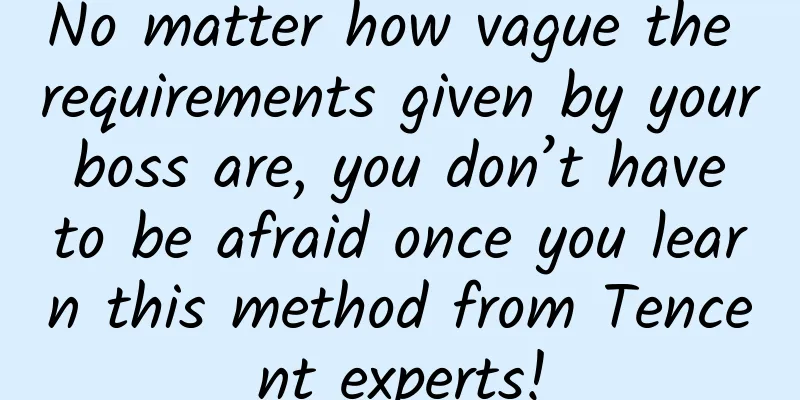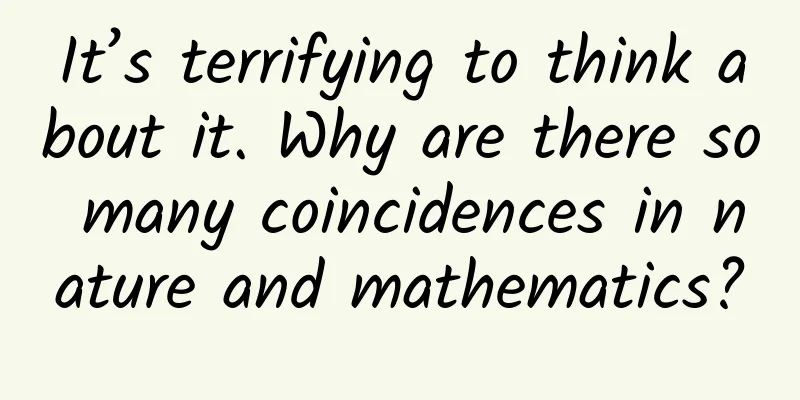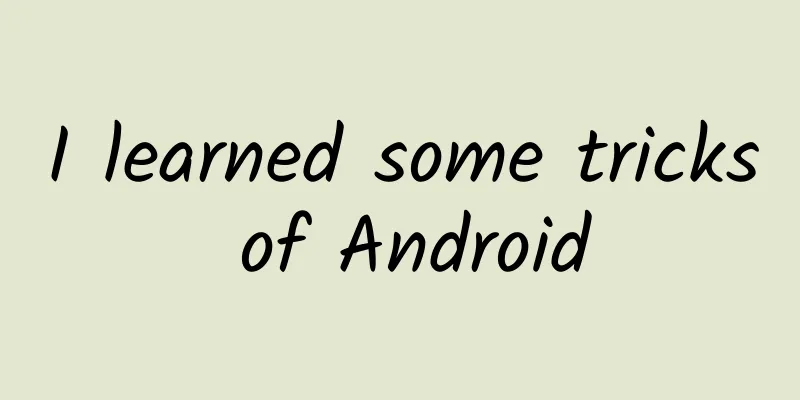No matter how vague the requirements given by your boss are, you don’t have to be afraid once you learn this method from Tencent experts!

|
I recently read the book "Deliberate Practice". Although the language is a bit complicated, it is still very inspiring. The right method can achieve twice the result with half the effort and can help us reach the path of mastery faster and more efficiently. There is a case in the book about memorizing numbers. When others only read it once, normal people can only remember 7-8 numbers, but why can some people remember hundreds of numbers? If you don't understand, you may think that it is because of memory talent, but it is not the case. They just use a more effective method to remember - grouping numbers. Simply put, when I encounter "1992", I can remember these 4 numbers effortlessly because it is my birth year, so I don't have to memorize these four numbers by rote. There are many similar cases in the book. After reading many of them, I found that there is a core behind every skill. If we can find these cores, we can solve many problems efficiently. These cores are actually the so-called "correct methods", so the key to deliberate practice is to find these "cores". We are all designers, so we will use design as the starting point to talk about how we can "extract the core" at the design level and complete the task efficiently. In my opinion, to implement a simple daily requirement, the design can be divided into three layers:
I will take the requirement of "update pop-up window" as an example to share how to "raise the issue" at these three levels. Direction layer The interactive draft of the requirements is shown in the figure: The best version of the solution is as follows: The demand side feedback says that it does not look good, and then the problem arises. "Does not look good" is a particularly subjective and abstract adjective. If the designer blindly makes adjustments based on such feedback, the efficiency will definitely be very low. Therefore, at this time, we must break down the big problem and find out the key factors that cause it to look bad. After discussing with the demand side, we found that the key reasons why they think it is not good-looking are: not young enough, not energetic enough, and too conventional. From these keywords, we can derive many solutions, such as: ***Combined with the properties of the current page, the following two core directions are extracted: The above are the core keywords of the direction layer, which can give us a general direction for thinking. Executive level review Suppose now we follow the "colorful" direction layer to execute, it might be like this: Although it is colorful, it feels weird. However, executing based on "fun" is also confusing, and it is not clear what fun is. So at this point we will find that although the core of the direction layer can provide us with a certain direction, it is not clear enough and there will still be confusion during execution, so we need to extract the core of the execution layer again so that it can be executed smoothly. Next, we extract the core of the execution layer based on the direction layer. 1. Fun There are many interesting ways, among which personification is a technique I often use. For example, this personification is used in many design works: In this update pop-up screen, I also used the design technique of "anthropomorphism", such as the combination of the megaphone and the tongue, and the enlarged use of the image of Kuroko: 2. Colorful Colorful must have multiple colors. No matter you use adjacent colors or contrasting colors, the most important thing is harmony, and the most important thing about harmony is echo. Whatever color I want to blend into the background, it should be reflected in other parts of the image. For example, in the image, so I made the megaphone green, but it feels like there is no green echo in the lower half of the image, so can I make the image wear tinted glasses? Try: This can not only echo the color, but also increase the fun. So the final effect is as follows: The above is the core extraction of the execution layer, which can guide us in implementing the design and has good scalability, such as echo and personification, which can cover many design scenarios. "Details layer" review ***Let's talk about the details. What is tested here is the basic skills, which cannot be completed in a day or two. But if there is anything you don't know, you can still ask other team members for help. Here are three details. 1. Tongue When I was drawing the tongue, I looked for a lot of references online. When I connected it to the loudspeaker, it always felt weird, but I didn't know why. Now I can ask for advice. In fact, the "core" is the lack of "thickness and dark side", because the loudspeaker itself has a relationship between light and dark. If the connected tongue is drawn flat like the reference picture, it will look weird, so the final adjustment is as follows: 2. Glasses The glasses I drew at first looked like this: Everyone felt that it was not special enough, not trendy enough, so they found some references: The core of the details here lies in the "shape of the lens" or "texture on the lens". Under the guidance of such "core" details, the glasses below are created. 3. Background The problem with the background is that the main object forms a "triangular composition", which makes the picture not full enough: The core solution to the lack of fullness is to “add where there is dissatisfaction”, so I increased the visual weight of the upper left corner and some textures of the background to make the whole look fuller: In addition, when I was drawing the penguin girl, because my personal modeling ability was very weak, I copied and referred to some other cartoon characters, so that I could have a little feeling for the expression and movement. I also got help from many colleagues and adjusted many details of the posture: But when it comes to the basic skills of painting, there are so many "core points" that cannot be improved immediately. It takes accumulation over time to do better, and continuous practice is needed to keep improving. Summarize
The above is my personal understanding of how to deliberately practice to extract the core. Please point out any shortcomings so that we can improve together. |
<<: Design like a psychologist! 5 practical tips to control user behavior
Recommend
From online self-made to film company video websites are getting bigger and bigger
After the dispute over copyright content, online ...
Beauty is in the eyes of the beholder? The secret lies in the difference in aesthetics
We often say "Beauty is in the eyes of the b...
Apple server abnormalities have caused a sharp drop in the daily activation volume of many apps!
In the past two days, many friends have reported ...
How can more than 700,000 “immovable” cultural relics resist the erosion of time?
The third national cultural relics survey shows t...
If you don’t write your resume like this on iOS, you won’t be able to find a job
In the workplace, a resume is like a storefront. ...
How do you monetize your product? Here are 3 channels to help you sort out
As dividends disappear and capital returns to rat...
1 framework and 3 models for UGC community operations!
Community is a good product, but it is also a com...
Register as a mobile developer essential tool, get 100G Baichuan Multimedia traffic and 10 yuan recharge card for free
Ali Baichuan (baichuan.taobao.com) is the wireles...
Why can't we feel the earth spinning?
Regarding rotation, it's not that simple. By ...
Chen Aiguo: 10 Lectures on Child Psychoanalysis
Chen Aiguo: 10 Lectures on Child Psychoanalysis R...
Data fraud black industry technical post: How to increase the traffic of WeChat public accounts, Weibo celebrities, and live broadcast influencers
If you only look at the fraudulent behavior of We...
Quantitative Learning Cloud Lecture Hall Tuo Zi Han Strong Market Time-sharing Volume Price Core Aggregate Auction Time-sharing
Quantitative Learning Cloud Lecture Hall - Tuo Zi ...
Top 10 Marketing Keywords in 2020
Looking back at 2020, although affected by the ep...
Why is ChatGPT like a "100,000 Whys" answering machine?
Recently, the artificial intelligence ChatGPT has...
Annoying phone battery life: It’s not the battery’s fault
The functions of the smartphones we use nowadays ...









